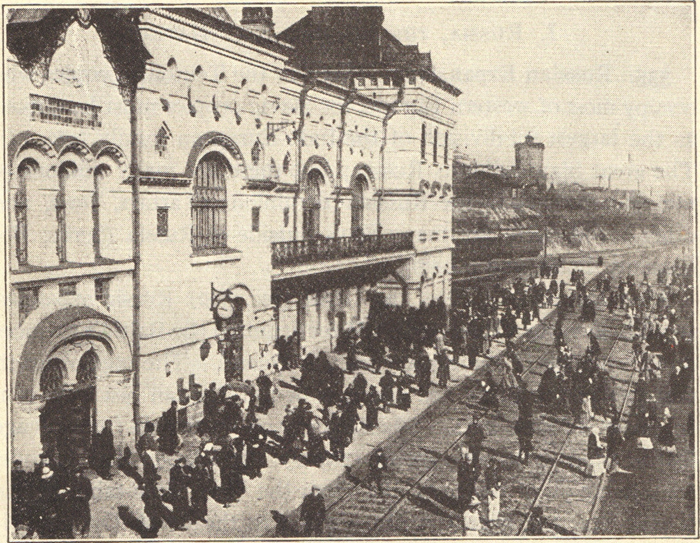Terminal of the Trans-Siberian Railway (Railroad) in Vladivostok, Russia, photographed circa 1920. Russia had for centuries sought adequate ports. The railway through Siberia gave Russia an efficient means of transporting goods to and from the Pacific Ocean area.
"The Siberian railroad was built by the government (1891-1905) with money raised chiefly by issuing bonds to foreign investors." Click here to enlarge this image.
The Trans-Siberian Railroad, completed in the early 20th century, is one of the longest railway lines in the world, stretching over 5,700 miles from Moscow to Vladivostok. Built between 1891 and 1916, it connected European Russia with its eastern territories, crossing the vast expanse of Siberia. The railroad played a crucial role in the economic and political integration of the Russian Empire, promoting settlement, trade, and resource development in remote areas. It also became a strategic asset during wars and revolutions, allowing troop movement and supply transport. Today, it remains vital for Russia's transportation and trade networks.
|














